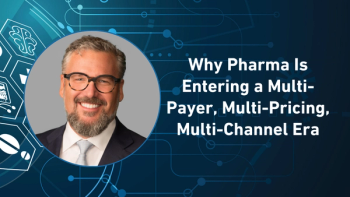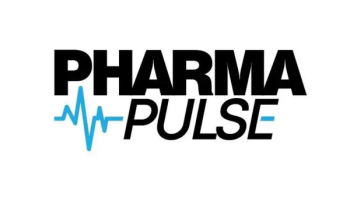
As Trump Pharma Tariff Deadline Looms, Here's How the Sector Got Here
Key Takeaways
- U.S. tariffs on imports from Mexico, Canada, and China have disrupted the pharmaceutical industry, prompting reshoring discussions.
- Companies like Eli Lilly, AstraZeneca, and UCB are investing in U.S. manufacturing to mitigate tariff impacts and ensure supply chain resilience.
Is the industry ready for the Aug. 1 deadline of when these levies go into effect?
As the month of July winds down, the trade wars featuring the United States versus all other nations have been in full swing for about six months now. This had been kicked off by President Trump’s Feb. 1 decision to impose 25% tariffs on Mexican and Canadian imports—along with 10% on goods coming from China—to encourage these nations to act on limiting illegal immigrants and fentanyl from entering the United States.
All roads have led back to an Aug. 1 deadline that Trump has pointed to as being the day that high levies that he had threatened months prior would take effect.
So, how did we get here? Let’s take a look at the major timeframes1 that have made waves for the pharma industry, both indirectly and directly. Please note that some dates may have been omitted.
Timeline of key events
Feb. 1 - Trump enacts the aforementioned 25% tariffs on Mexican and Canadian imports, along with 10% on goods from China, stemming from the threat posed by illegal aliens and drugs, including fentanyl.2
Feb. 3 - Trump places a 30-day pause on both Mexico and Canada to allow time for negotiations on the immigration (via increased border security) and drug trafficking front to occur.3 The 10% tariff on China remains in effect.
“Regardless of whatever the political environment is or other ecosystem kind of environmentally-related topics may be of concern here, I think that it comes back to the manufacturers really having a continuity plan in place across their entire business and understanding how they can try to mitigate any risks, hurdles, or challenges that they may face, and ultimately, try to achieve development and commercialization of these therapies,” explained Jenna Dale at the time, Cencora’s director of client relations.4
Meanwhile, Jim Shehan, chair of the FDA regulatory practice at Lowenstein Sandler, expressed5 his concern to me, noting that “we do know that a very large percentage of the recent deal making has been in licensing of Chinese drugs by the global pharmaceutical industry. If there's a supply aspect to that deal, I guess tariffs have an effect. If there isn't, I don't think it substantially reduces that. Now, if relationships with China deteriorate and one country or the other decides that that's an area they want to meddle in, I think that would have a big impact, but we haven't seen that yet. Tariffs on China will make generic drug prices go up I assume because China is such an important supplier of active pharmaceutical ingredients, as well as finished products.”
Feb. 10 - Trump elevates the tariffs on steel and aluminum to 25% applying to all countries.6
Feb. 18 – The US announces it plans to improve a tariff of 25% or higher on pharmaceuticals.7 This begins to raise the question of whether such a levy would start to encourage manufacturers to pursue domestic production. Geoffrey Joyce, PhD, director of health policy at USC’s Leonard D. Schaeffer Center for Health Policy & Economics, explains8 that “it clearly tips the balance more so in the favor of domestic production, but these are really low margin products, so I think really the losers would be consumers in this case. Supply of drugs I think could be disrupted. I don't think we would see in the short term. We wouldn't see significant changes in production in the US. You do worry about if it's really a low margin business, and you've added tariffs that these foreign manufacturers are going to cut corners, and, like you mentioned, quality declines, and we've seen that. We have evidence of foreign manufacturers cutting corners and having less than high-quality standards.”
Feb. 26 – Eli Lilly and Company announces that it will be constructing four new pharmaceutical manufacturing sites in the United States, representing financial commitments in the expansion space exceeding $50 billion since the start of 2020.9 Three out of the four new plants are expected to prioritize the production of active pharmaceutical ingredients (APIs) and reshoring small molecule chemical synthesis services, along with solidifying the company’s overall supply chain. As for the fourth site, it will aim to expand Lilly’s parenteral manufacturing network that will be essential for the production of injectable therapies.
The million-dollar question is: how will the tariffs affect the reshoring of manufacturing services?
Brad Stewart, BDO’s national life sciences co-leader, explained10 that, “in four years, we'll have another administration, and maybe this goes the entire opposite direction. These are very challenging things, because our supply chains in the life sciences industry are large, long, highly-regulated, and take long periods of time to change, so changing something that you might change back in a couple of years is difficult.
“ … If you have capacity in the US now, does it make sense to prioritize that? Absolutely. That's a way to de-risk your supply chain. If you're working with a CDMO or you have internal manufacturing capacity that you can utilize—and maybe it's slightly more expensive—it's probably worth that small additional cost to de-risk it and not have to deal with that uncertainty. It depends on what you're doing.”
March 6 – After mentioning that the 25% import tax on Mexico and Canada would go into effect three days prior, Trump decides to delay tariffs that comply with the 2020 (United States-Mexico-Canada Agreement (USMCA) for one month, with reciprocal tariffs still expected to go into effect by April 2.11
April 2 - Trump announces that he will be enacting reciprocal tariffs on countries that are running trade surpluses with the United States—which is when the value of its exports exceeds the value of its imports. This includes a flat 10% tax on imports, along with 34% tax on imports from China and 20% on the European Union.12
May 12 – President Trump unveils a new executive order—"Delivering Most-Favored-Nation Prescription Drug Pricing to American Patients”—meant to provide an equal playing field by having drug companies match the lower prices they pay for pharmaceuticals in developed countries.13 The president believes that that the order could help decrease drug prices by 30% to 80%.
June 4 – Pharma Commerce publishes a piece14 outlining how with possible 25% US tariffs on pharmaceuticals looming, much of industry would agree that they would impact not only the pharma manufacturing sector, but the overall supply chain as well.
For one, a report commissioned by the trade association, Pharmaceutical Research and Manufacturers of America (PhRMA)—whose members include Novartis, Novo Nordisk, and Pfizer, Sanofi, and Takeda among the list—predicts that the tariffs would raise drug costs in the United States by nearly $51 billion yearly, while also raising US prices by as high as 12.9%.14
This is in the midst of various companies—such as Regeneron, Roche, Merck, and ThermoFisher—reshoring production to the United States in order to avoid paying these hefty tariffs—a process that can take years if the proper infrastructure is not already put in place. Piramal Pharma Limitedis also investing $90 million toward growing two of the company’s plants located in Lexington, KY and Riverview, MI.14 The plants handle sterile compounded and active pharmaceutical ingredient (API) development and manufacturing respectively.
It’s become clear that geopolitical and economic volatility are reshaping the way organizations prioritize supply chain investments.
“I think there's a focus on supply chain resilience and technology that enables that resilience, because there's a lot of uncertainty out there, and nobody knows where the next potential uncertainty is going to occur,” said Scott Tillman, Logility’s senior vice president of innovation.15 “Trying to plan around specific types of uncertainty is difficult. I think companies are looking to invest in technologies that drive resilience, so that they can have a pocket of understanding that regardless of where that uncertainty comes from—whether it be tariffs, political, COVID, some sort of pandemic-type thing that impacts the supply chain. They're focused on resilience.”
June 12 - UCB, a biopharmaceutical company that specializes in central nervous system disorders and immunology, is investing $5 billion into a new, state-of-the-art biologics manufacturing plant in the United States.16 Alongside the investment, UCB will also be expanding its collaborations with US contract manufacturing organizations (CMOs) to support the production of its key growth drivers and future pipeline.
June 28 - Hikma Pharmaceuticals USA announces that it will be financially committing $1 billion by the year 2030 to further grow its US manufacturing and R&D capabilities.17 With an investment of this magnitude, the company expresses its interest in harnessing its domestic services to develop, produce, and deliver various medications that may be needed by the US healthcare system to ultimately meet patient needs.
July 7 – With a 90-day negotiating period on country-specific US tariffs is set to expire on July 9, Trump enacts a multitude of tariffs expected to go into effect on Aug. 1, including a 25% import tax on both Japan and South Korea, along with new taxes on a dozen other nations.18
July 8 - There had been talks over the past few months that a possible 25% tariff might impact the sector, Trump noted that import taxes of up to 200% could take effect in a year or year-and-a-half.19 Last year alone, the United States imported $212 billion in pharmaceuticals, which made them the fifth most imported product.20
July 15 - President Trump tells reporters that the pharmaceutical sector should prepare for levies by the beginning of next month, which could coincide with the planned reciprocal tariffs rates that were previously set.21 He describes it as being a “low tariff” that would slowly increase over the course of approximately a year. A day later, Thermo Fisher Scientific would announce an expansion of its strategic partnership with Sanofi through the planned acquisition of Sanofi’s sterile drug product manufacturing facility in Ridgefield, NJ, in a move expected to enhance Thermo Fisher’s US-based sterile fill-finish capabilities and strengthen its ability to serve both Sanofi and a broader range of pharma and biotech clients seeking domestic manufacturing capacity.22
July 21 – AstraZeneca reports that it plans to invest $50 billion by 2030 in US-based drug manufacturing and R&D, marking its largest single manufacturing investment globally.23 The announcement is headlined by a new state-of-the-art facility in Virginia that will produce active pharmaceutical ingredients (APIs) for weight management and metabolic treatments, leveraging AI, automation, and data analytics.
July 27 - Trump reached a formal trade agreement with the European Union in which a maximum 15% levy will be imposed on “most” EU exports, including autos and their parts; semiconductors; and pharmaceuticals.24 The EU will also be investing $600 billion in the US and purchasing $750 billion worth of US energy exports through the year 2028.
With branded drugs being included in the tariff, analysts are now projecting that this deal could ultimately cost the pharma sector between $13 billion and $19 billion.
The following day, the US president states the countries who do not negotiate deals of their own will end up paying tariffs of 15 % to 20%.
July 30 - Trump decides to enact a 25% tariff on products imported from India. He also and put a 50% levy on most Brazilian items.25
Mitigating risks
Although the pharma industry now has more clarity as to the direction the tariffs are headed, there is still plenty of value in taking operational and strategic steps to mitigate risks while awaiting any further clarity on tariff implementation.
“ … I'd want to try and stockpile as much inventory as I could in the US, just to take that tariff uncertainty out of it.” Stewart explained.26 “The product’s already on shore, and I can then sort of deal with what happens, or at least have a little bit more time to do that. Two, looking at alternative vendors. … really looking if there are opportunities to change those suppliers that will have a positive impact on the price of the drugs, or my cost to manufacture them.
“Certainly, as we discussed, I think modeling and really looking at it [is key]. Do I really understand my supply chain from a global perspective, and if I change one part of it, what impact does it have on all the other parts of it? I think that's what many of the executives are doing. The industry now is starting to think very strategically.”
References
1. Major Developments in Trump’s Trade War. Reuters. July 31, 2025. Accessed July 31, 2025.
2. Saraceno N. Trump Imposes Trade Tariffs on Canada, Mexico, and China. Pharmaceutical Commerce. February 3, 2025. Accessed July 31, 2025.
3. Saraceno N. Trump Pauses Canada and Mexico Tariffs. Pharmaceutical Commerce. February 4, 2025. Accessed July 31, 2025.
4. Saraceno N. Properly Preparing for Tariffs and Other Supply Chain Obstacles. Pharmaceutical Commerce. February 5, 2025. Accessed July 31, 2025.
5. Saraceno N. How Tariffs Could Affect Generic Drug Prices and the Global Pharmaceutical Market. Pharmaceutical Commerce. February 6, 2025. Accessed July 31, 2025.
6. Saraceno N. United States Elevates Tariffs on Steel and Aluminum. Pharmaceutical Commerce. February 11, 2025. Accessed July 31, 2025.
7. Saraceno N. Trump Reveals Plan to Enact 25% on Pharmaceuticals. Pharmaceutical Commerce. February 19, 2025. Accessed July 31, 2025.
8. Saraceno N. Impact of Tariffs on the Generic Drug Market. Pharmaceutical Commerce. February 26, 2025. Accessed July 31, 2025.
9. Saraceno N. Lilly to Build Four New Manufacturing Facilities. Pharmaceutical Commerce. February 27, 2025. Accessed July 31, 2025.
10. Saraceno N. The Case for Reshoring Manufacturing to the United States. Pharmaceutical Commerce. March 10, 2025. Accessed July 31, 2025.
11. Saraceno N. Trump Delays Certain Tariffs on Canada and Mexico. Pharmaceutical Commerce. March 7, 2025. Accessed July 31, 2025.
12. Saraceno N. Trump Issues New Reciprocal Tariffs. Pharmaceutical Commerce. April 3, 2025. Accessed July 31, 2025.
13. Saraceno N. White House Introduces Most Favored Nation EO. Pharmaceutical Commerce. May 13, 2025. Accessed July 31, 2025.
14. Saraceno N. The Tariff Effect: Greater Supply Chain Prepares for Repercussions. Pharmaceutical Commerce. June 4, 2025. Accessed July 31, 2025.
15. Saraceno N. Driving Supply Chain Resilience. Pharmaceutical Commerce. June 4, 2025. Accessed July 31, 2025.
16. Saraceno N. UCB to Invest $5 Billion into US Production Plant. Pharmaceutical Commerce. June 16, 2025. Accessed July 31, 2025.
17. Saraceno N. Hikma Commits $1 Billion to Boost US Drug Manufacturing and R&D Services by 2030. Pharmaceutical Commerce. July 3, 2025. Accessed July 31, 2025.
18. Saraceno N. Trump Imposes 25% Tariffs on Japan, South Korea, and a Dozen Other Nations. Pharmaceutical Commerce. July 8, 2025. Accessed July 31, 2025.
19. Saraceno N. Trump: Pharma Industry Should Brace for up to 200% Tariffs. Pharmaceutical Commerce. July 9, 2025. Accessed July 31, 2025.
20. Banker S. Trump: Pharma Companies Pour Billions Into US Manufacturing to Avoid Tariffs. Forbes. July 23, 2025. Accessed July 31, 2025.
21. Saraceno N. Trump Says Pharma Industry Should Expect Tariffs by Aug. 1. Pharmaceutical Commerce. July 17, 2025. Accessed July 31, 2025.
22. Tracy D. Thermo Fisher, Sanofi Expand Partnership to Boost Sterile Drug Production. Pharmaceutical Commerce. July 16, 2025. Accessed July 31, 2025.
23. Saraceno N. AstraZeneca Commits $50 Billion to US Manufacturing and R&D Efforts by 2030. Pharmaceutical Commerce. July 22, 2025. Accessed July 31, 2025.
24. Saraceno N. United States, European Union Reach Trade Pact. Pharmaceutical Commerce. July 29, 2025. Accessed July 31, 2025.
25. Major Developments in Trump’s Trade Wear. Reuters. July 31, 2025. Accessed July 31, 2025.
26. Saraceno N. United States, How Pharma Executives Can Prepare for Tariff Uncertainty. Pharmaceutical Commerce. July 25, 2025. Accessed July 31, 2025.
Newsletter
Stay ahead in the life sciences industry with Pharmaceutical Commerce, the latest news, trends, and strategies in drug distribution, commercialization, and market access.




